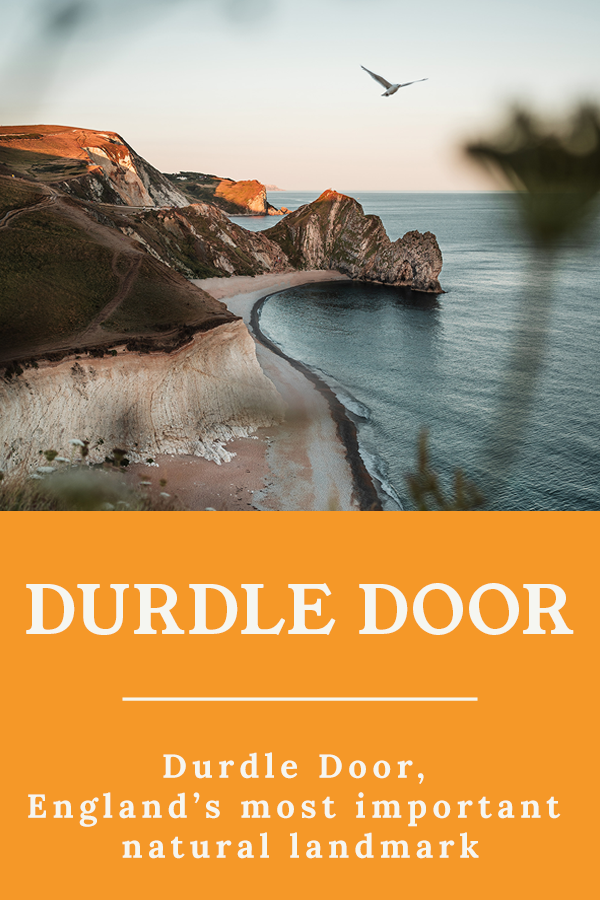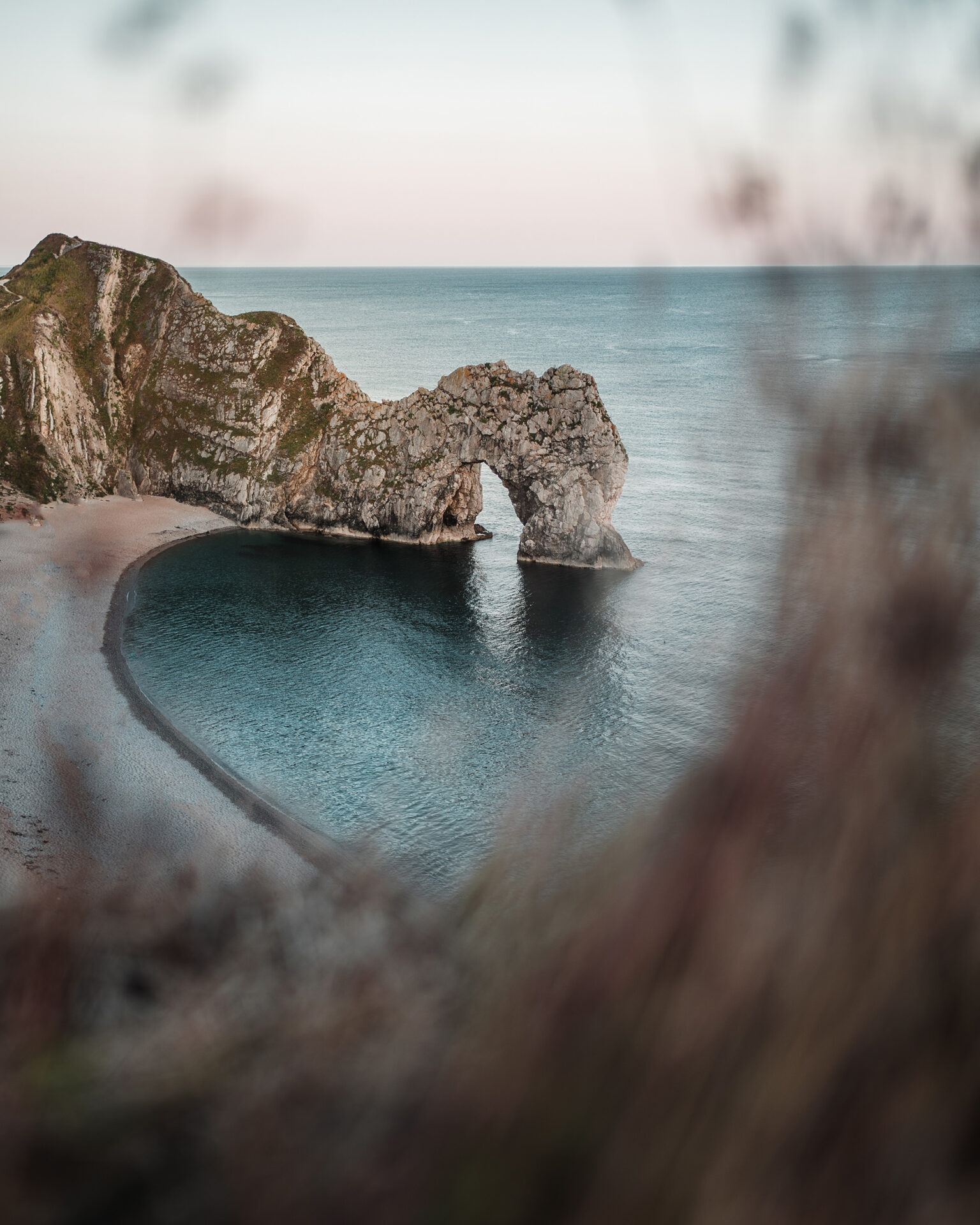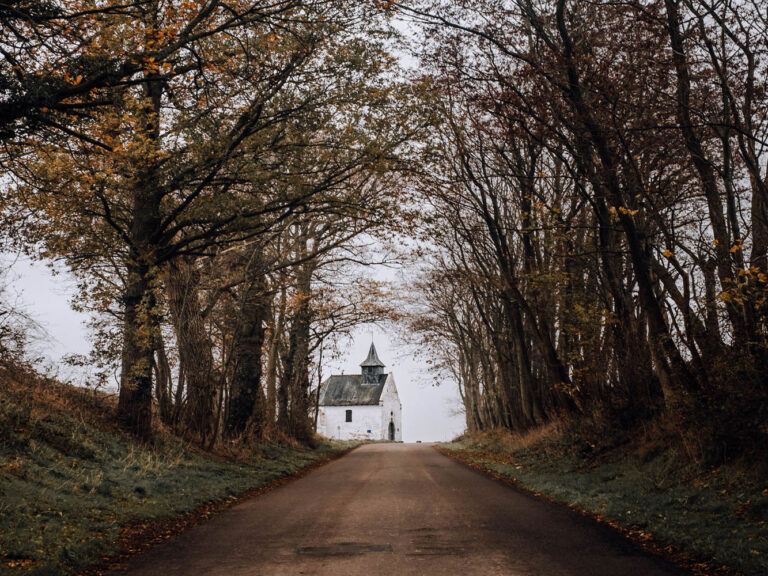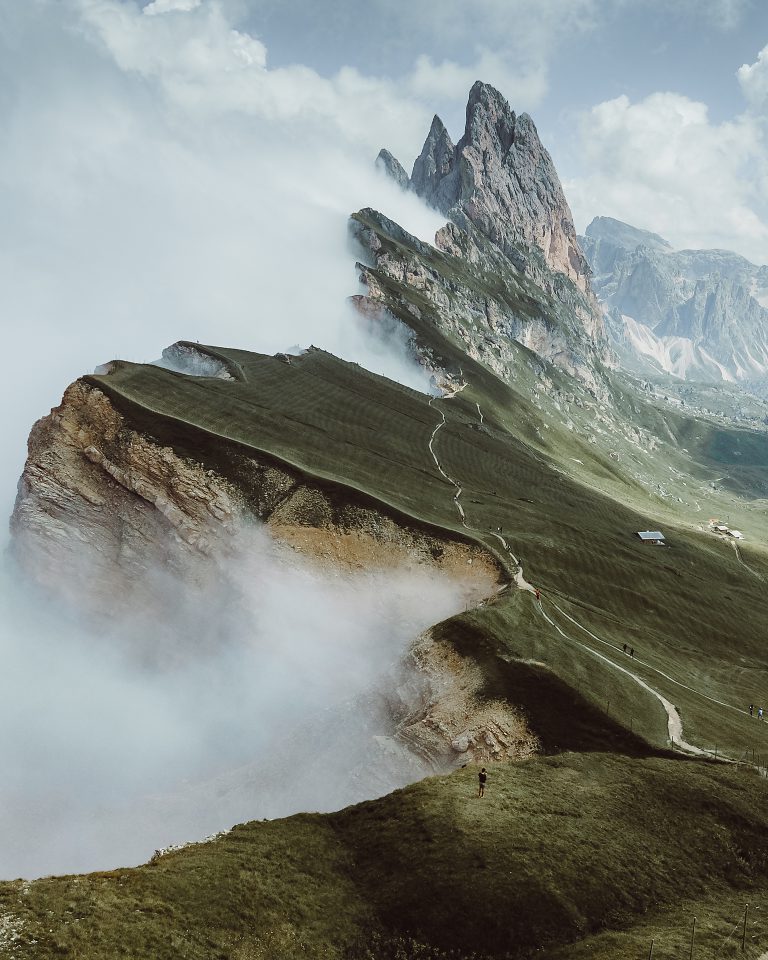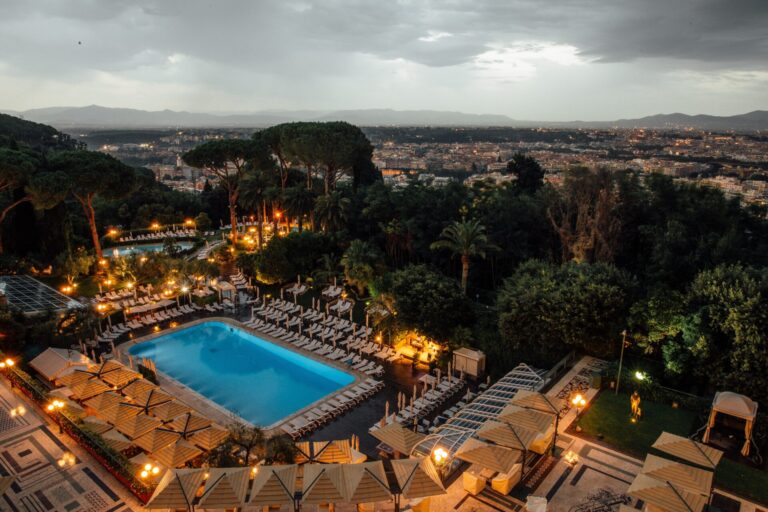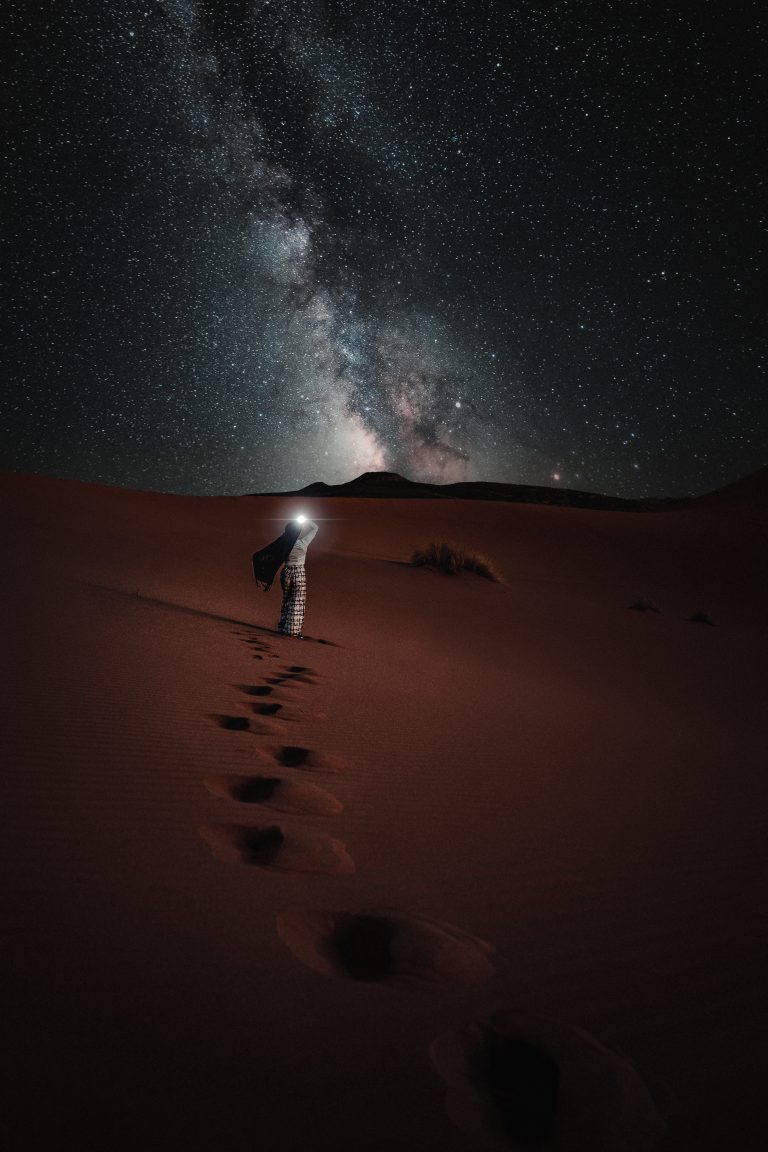Durdle Door, England’s most important natural landmark
For local photographer Ben Ingram, the Durdle Door no longer holds any secrets. He has photographed the Durdle Door from various angles and during different seasons throughout the year.
In this article, Ben shares several useful and practical tips for photographing this amazing landmark.
About Durdle Door
The Durdle Door is an impressive limestone arch standing in the sea and located on the famous Jurassic Coast of Dorset, UK. While it’s one of the UK’s most important natural landmarks, it’s also surrounded by several other unique and majestic landmarks.
How was the Durdle Door formed?
The pressure of the waves around the rocks caused the erosion of the limestone, which created a hole in the center of the cliff. That’s also how the Durdle found its name: because nature pierced its way through the rocks like a drill, which led to an old English word thyrel.
Over the span of centuries – and through evolving dialects – “Thyrel” was changed to Durdle.
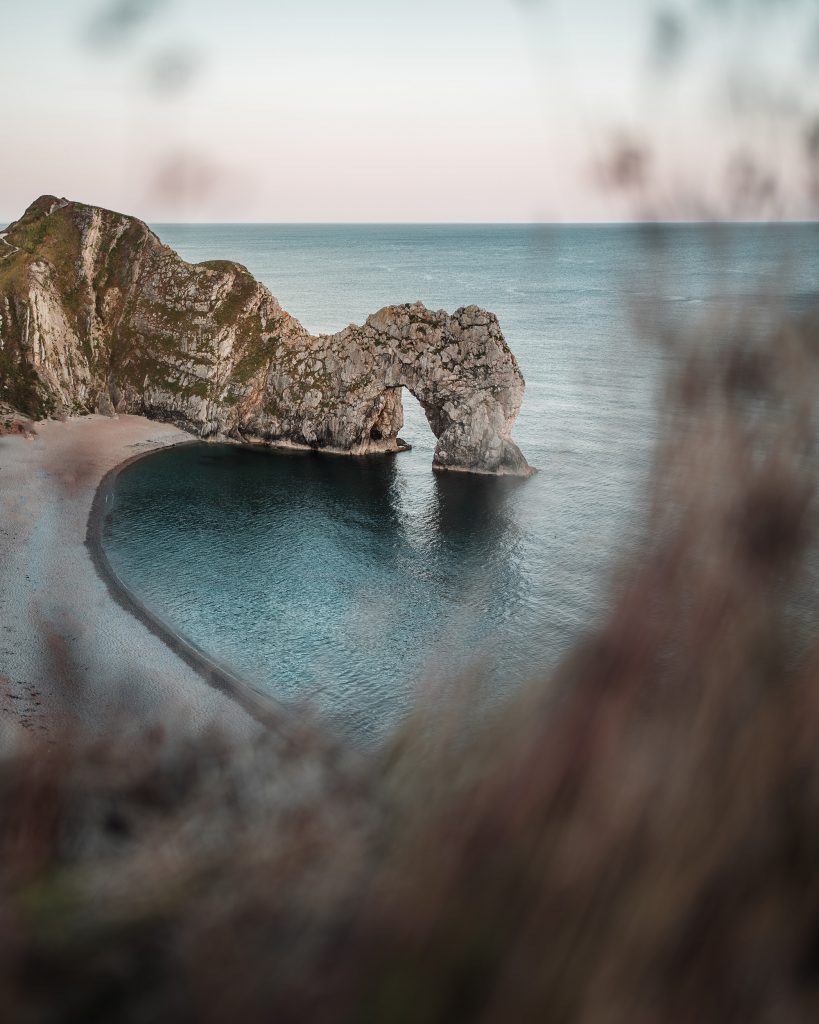
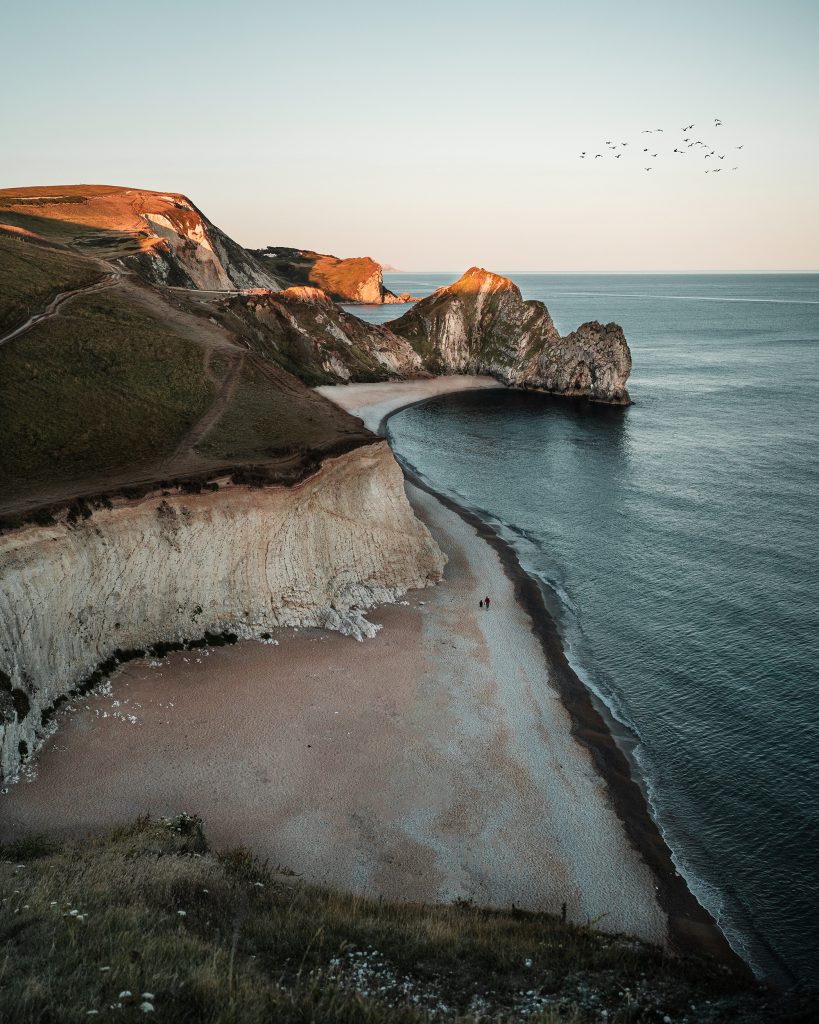
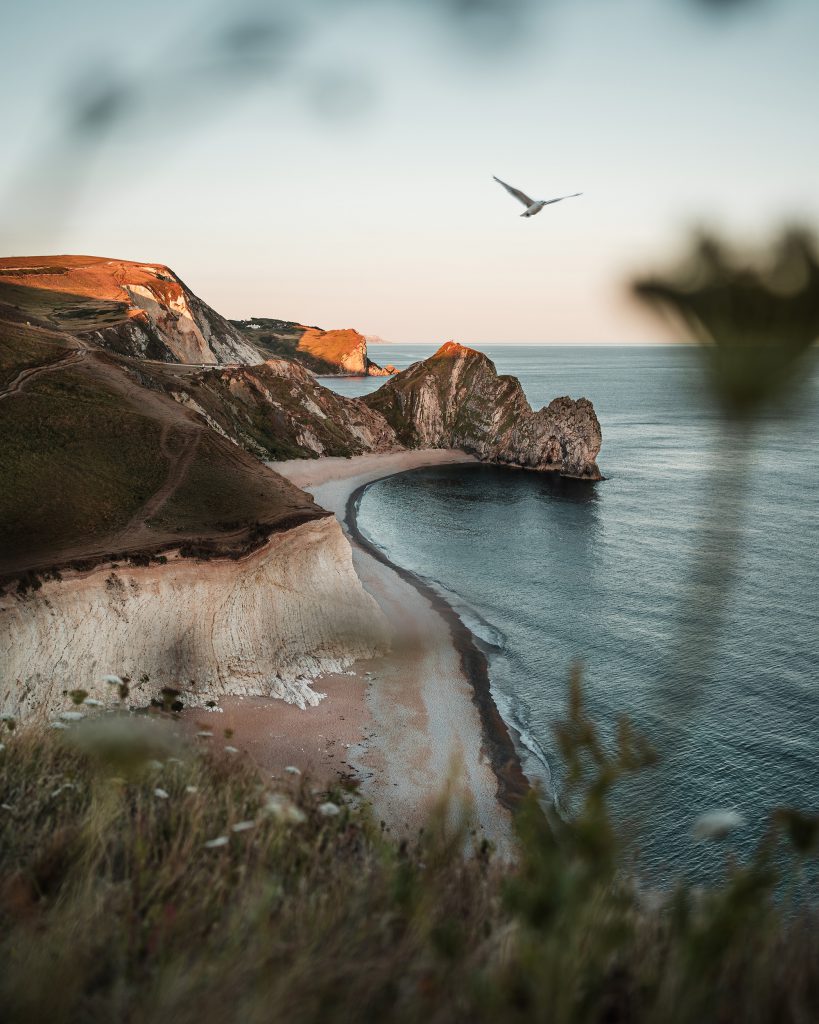
Jurassic Coast
The Durdle Door is part of the Jurassic Coast, which was awarded the status of “World Heritage Site” by UNESCO in December 2001. As England’s first natural World Heritage Site, the Jurassic coast is one of England’s most famous wonders.
Stretching from Exmouth to Studland Bay Dorset, the 95 miles of Jurassic Coast represents millions of years of the Earth’s history. Which created some majestic landmarks, including:
- Lulworth Cove. This is a landmark within walking distance of the Durdle Door and is also known as one of the world’s finest examples of a cove, which attracts approximately 500,000 visitors per year.
- Stair Hole. Just next to the Lulworth Cove, you’ll find another small – but very remarkable – cove. The opening of this cove is a natural arch which was also created by erosion.
- Gad Cliff. An impressive line of rocks, which gives you a great view over Pondfield Cove. Around the cliff and the cove you’ll find various WWII anti-tank structures called “dragon’s teeth”.
Other interesting locations that are part of the Jurassic Coast, but might be more convenient to visit if you have a car at your disposal:
- Portland Harbour. During its construction in 1872, the Portland harbour was the world’s largest man-made harbour in the world. It still remains one of the largest in the world today.
The harbour was partly built as a facility for the Royal Navy and served a very important role in both World Wars.
Nowadays, the harbour is a popular location for wind surfing, wreck diving, and sailing. It even hosted the sailing events for the 2012 Olympic games! - Lyme Bay. The bay is most known because many of the earliest dinosaur remains were found in this area. Not far from this bay, you can find the renowned Dinosaurland Fossil Museum.
- Golden Cap. Last, but definitely not least, the Golden Cap is the highest point on the south coast of Great Britain and is visible for miles along the coastline.
Tips for visiting Durdle Door in 2021
Because landscape photography might seem like black magic for some of our adventurous readers and aspiring photographers, we asked local photographer Ben Ingram to tell us more about the photos he took and how he found the right angles.
“The Durdle Door is actually located less than 15 minutes from my home, so it’s my most favorite spot for sunset photos! For this specific set of pictures, I had to hike over various hills to reach this point-of-view and just loved the way the beach curved into the shot.
But honestly? The Durdle Door is a fantastic location for photographers, since it offers such a variety of shots through the changing seasons!
If you catch sunrise in the winter, you can see the sun rise exactly through the Door itself by shooting from the beach. And when you’re shooting the sunset in the summer, you can catch the golden hour lights on-top of the Door itself as well as the surrounding headland.
And it’s not only the weather conditions that are making this location interesting, it’s also a great place to try and create different interesting compositions: if you have a wide angle lens, a popular shot is to catch the winding stairs leading the eye into the frame and towards the Door. Otherwise, you could climb the hills further on and shoot the landmark from a height… just like I did for this gallery!”
When we asked Ben for more tips to re-create this particular shot, he told us that timing is everything!
“I had arrived on location around 10 past 8 in the evening, and as you can see the golden light had passed the Door itself, but it was still creeping up the headland behind it. So if you would like to catch the light on the Door … make sure to give yourself plenty of time to park up at the car park and take the walk down the path!
Please be aware: because of the COVID / social distancing measures, the path from the car park has been made extra long.
After you walk down the car park path, you’ll reach the stairs that wind down onto the beach. Here you’ll have two options: you can keep walking over the hill to the right of the stairs to give yourself a similar composition to mine, or you can head down onto the beach to try a shot by the sea.
My best tip for shooting Durdle Door is to give yourself plenty of time, since the car park can be quite expensive and it can be a 10 minute walk from the car down to the Door.”
About the shot
Ben also mentioned he uses a Sony Alpha A7III, so we decided to list his gear below:
Gear
- Body: Sony Alpha A7III (review)
- Lens: Sony FE 35mm f1.8
Settings
- Shutter speed: 1/5000
- ISO: 640
- Aperture: f/2.8
Software
- Lightroom
About Ben Ingram
Ben Ingram is a 21-year-old photographer and videographer from the South Coast of the UK. He graduated university in Media Production and is now a full time creative freelancer specializing in photo and video. Next to landscapes, he is specialized in portraits and street photography.
Save for later …
